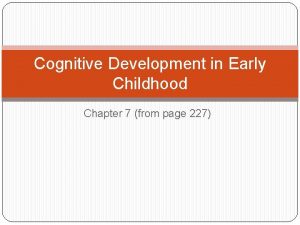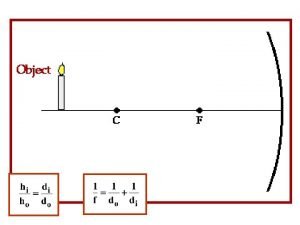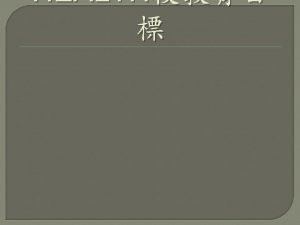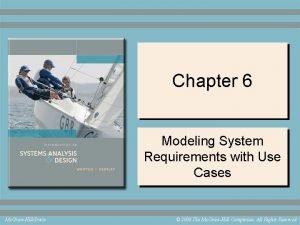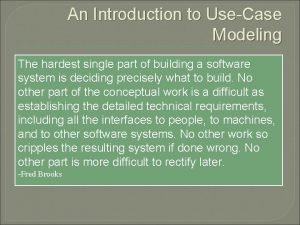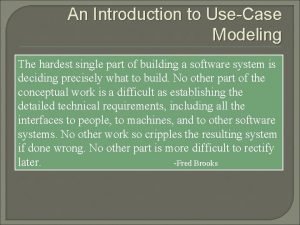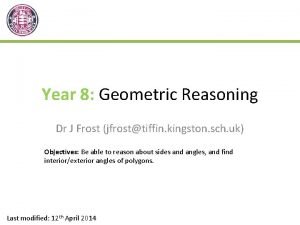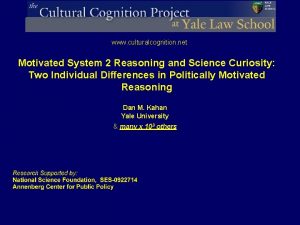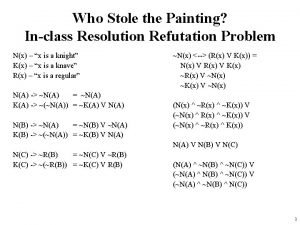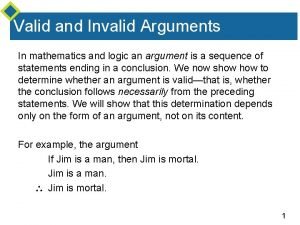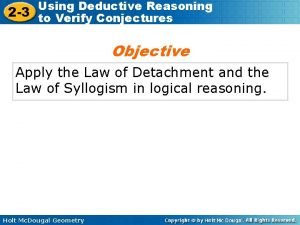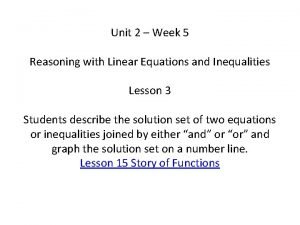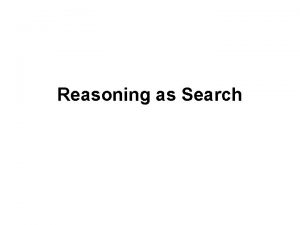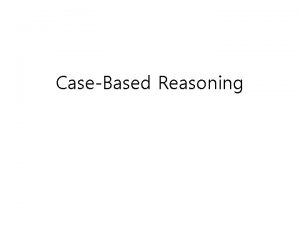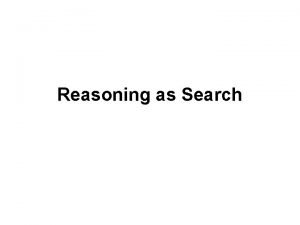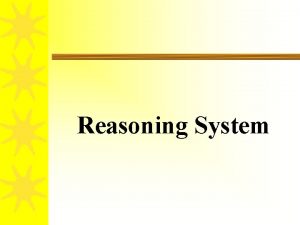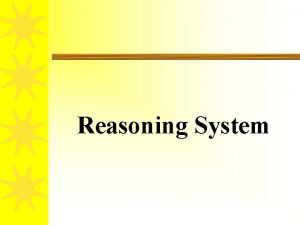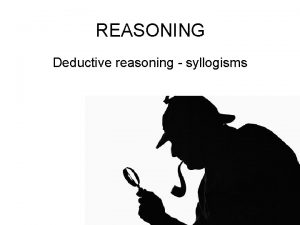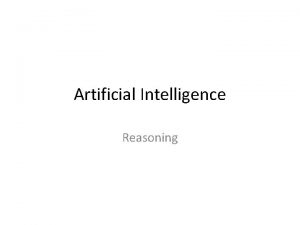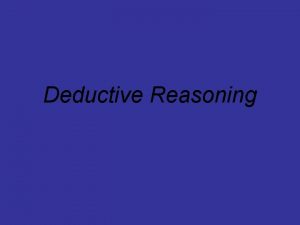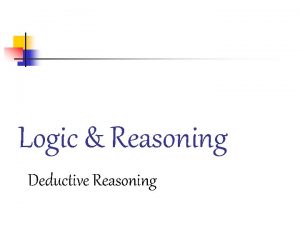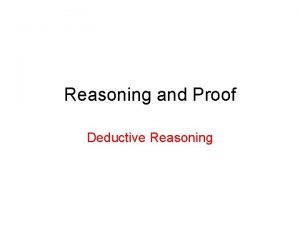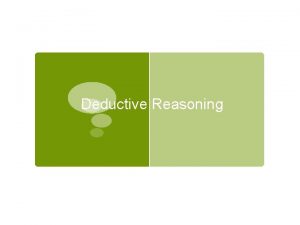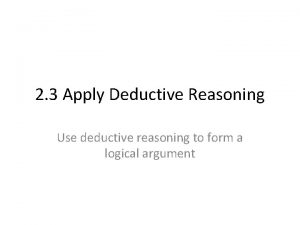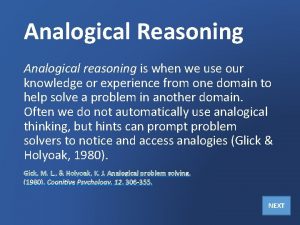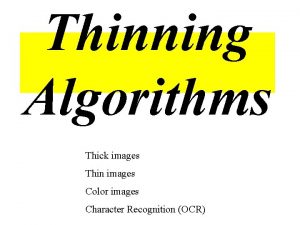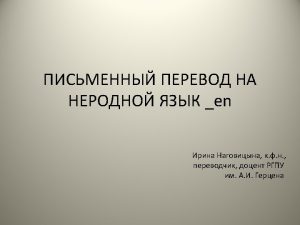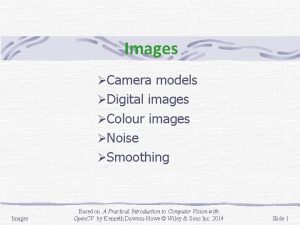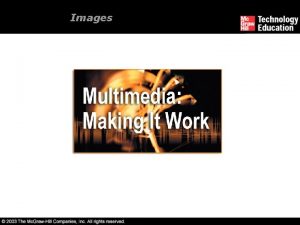ON REASONING WITH IMAGES THE USE OF IMAGES




































































- Slides: 68

ON REASONING WITH IMAGES: THE USE OF IMAGES IN CLINICAL RESEARCH Thomas Bittner Louis Goldberg University at Buffalo

CLINICAL RESEARCH IN TEMPOROMANDIBULAR DISORDERS TMD is a pain and disability disorder current studies have significantly increased the size of the domain of analysis to capture all relevant variables the temporomandibular joint (TMJ) is a crucial variable: it drives diagnosis and treatment controversies abound concerning the relationship of joint characteristics as represented in images to patient symptoms and treatment choices problem: how to represent TMJ image characteristics in a computerbased system that is interoperable with other data collected in the study

EXAMPLES OF MEASURABLE VARIABLES pain levels functional capacity gross mobility of the jaw mobility of the TMJ pressure-pain threshold of the TMJ biopsychosocial factors contributing to TMD

CLINICAL RESEARCH IN TEMPOROMANDIBULAR DISORDERS TMD is a pain and disability disorder current have studies increased the size of the domain of analysis to capture all relevant variables the temporomandibular joint (TMJ) is a crucial variable: it drives diagnosis and treatment controversies abound concerning the relationship of joint characteristics, as represented in images, to patient symptoms and treatment choices problem: how to represent TMJ image characteristics in a computerbased system that is interoperable with other data collected in the study

The problems with pre-coordination, such as the pre-coordination of certain relationships of entities in the TMJ with clinical syndromes.

AN EXAMPLE OF PRECOORDINATION zone of articulation: relation of the posterior band of the articular disc in relation to the head of the condyle in the closed position. The posterior band should be between 11: 30 and 12 o’clock. If it is anterior to that position it demonstrates the pathology; anterior disc displacement

Consequences How to resolve conflicts that arise out of pre-coordination in the face of deeply held beliefs. Research is necessary to determine if such pre-coordinations are valid.

TMJ DYNAMICS: NORMAL Annika Isberg, Temporomandibular joint Dysfunction: A Practitioner's Guide, ISIS Medical Media, 2001

TMJ DYNAMICS: NORMAL & ABNORMAL Annika Isberg, Temporomandibular joint Dysfunction: A Practitioner's Guide, ISIS Medical Media, 2001

RECAPTURE OF THE DISC Annika Isberg, Temporomandibular joint Dysfunction: A Practitioner's Guide, ISIS Medical Media, 20019

GOAL represent the relationships among the condyle, the articular disc and the temporal bone in an automatic system

the practical point of view the ontology must be immediately useful to a specific research enterprise

OVERVIEW 1. Identify the major parts of the TMJ 2. Establish the connectedness and adjacency relations among the various parts 3. Establish the qualitative order relations using landmarks as frames of reference 4. Establish relative size relations

Major parts of the TMJ is a real, three dimensional structure choose the coarsest level of granularity sufficient to distinguish the major proper parts of the TMJ gross anatomical granularity in this case

Major parts of the TMJ material parts rigid parts non-rigid parts cavities

material parts ANTERIOR TMDs: An Evidence Based-Approach to Diagnosis and Treatment. (2006) Eds: D. M. Laskin, C. S. Greene, W. L. Hylander. Quintessence Books, Chicago.

Rigid material parts that do not change shape (bones) fixed movable

Non-rigid material parts that do change shape but the topology does not change: the connected parts remain connected

Cavities filled with liquid: synovial fluid in the case of the TMJ ANTERIOR

we have identified three kinds of entities (parts) in the TMJ material rigid material non-rigid cavities

Connectedness and adjacency relations among the parts of the joint

Connectedness Relations ANTERIO R connectedness graph

closed and opened positions jaw closed jaw opened TMDs: An Evidence Based-Approach to Diagnosis and Treatment. (2006) Eds: D. M. Laskin, C. S. Greene, W. L. Hylander. Quintessence Books, Chicago.

Connectedness remains invariant in the opened and closed positions ANTERIO R connectedness Connectedness graph

Every TMJ can be represented by this connectedness graph Connectedness graph

adjacency relations No connectedness Only (temporary) adjacency Adjacency relation Connectedness adjacency graph

adjacency Adjacency relations • At all times the disc (red) is adjacent to the fossa (yellow) • At all times the disc (red) is adjacent to the condyle (pink) But at different times the disc may be adjacent to different part of the fossa / condyle

Adjacency disc-fossa Time 1

Adjacency disc-fossa Time 2

Adjacency disc-fossa Time 3

Adjacency disc-condyle Time 1

Adjacency disc-condyle Time 2

Adjacency disc-condyle Time 3

Ordering relations Refining adjacency relation between disc and fossa Refining adjacency relation between disc and condyle Specifying relative location of condyle and fossa

Shape landmarks of the fossa Rigid does not Change shape (bones) Convex curvature changes to concave

Fiat boundaries Rigid does not change shape (bones) Convex curvature changes to concave

Shape landmarks of the fossa Rigid does not change shape (bones) Local maxima/ minima

Shape landmarks of the fossa Rigid does not change shape (bones) articular (glenoid)fossa articular eminence

Fiat boundaries Rigid does not change shape (bones)

Fiat boundaries Rigid does not change shape (bones) 6 major fiat parts

Frames of reference Rigid does not change shape (bones) B C D E F A Circle is adjacent-to A

Frames of reference Rigid does not change shape (bones) B C D E F A Circle is adjacent-to B

Frames of reference Rigid does not change shape (bones) B C D E F A Disc is adjacent-to C and D

Ordering relations Refining adjacency relation between disc and fossa Refining adjacency relation between disc and condyle Specifying relative location of condyle and fossa

Shape landmarks of the condyle as frame of reference Disc is adjacent to the posterior head of the condyle Posterior head of condyle anterior head of condyle

Shape landmarks of the condyle as frame of reference Disc is adjacent to the posterior and anterior head of the condyle Posterior head of condyle anterior head of condyle

Shape landmarks of the condyle as frame of reference Disc is adjacent to the anterior head of the condyle Posterior head of condyle anterior head of condyle

Ordering relations Refining adjacency relation between disc and fossa Refining adjacency relation between disc and condyle Specifying relative location of condyle and fossa

Shape landmarks of the condyle Extension of The middle axis Middle axis of the condyle

Frames of reference Rigid does not change shape (bones) B C D E F A The extension of the axis of the condyle intersects the fossa in region C

Frames of reference Rigid does not change shape (bones) B C D E F A The extension of the axis of the condyle intersects the fossa in region D

Bringing the various ordering relations together

Ordering relations Refining adjacency relation between disc and fossa Refining adjacency relation between disc and condyle Specifying relative location of condyle and fossa

Ordering relations B C F D E A B A C D E F

bringing together multiple ordering structures: two frames of reference locates the position of the disc and condyle with respect to each other and to the fossa B A C E D F • The extension of the axis of the condyle intersects the fossa in region D • The disc is adjacent-to fossa regions C and D • The disc is adjacent to the posterior and anterior head of the condyle

we now have a three dimensional combinatorial space of possible relationships contained in the domain of the TMJ

All combinatorial possible constellations Disc adjacent to posterior head

All combinatorial possible constellations Disc adjacent to anterior head Disc adjacent to posterior head

All combinatorial possible constellations Disc is adjacent to fossa region A B C D E Disc adjacent to posterior head F

All combinatorial possible constellations Disc is adjacent to fossa region A Axis Of Condyle intersects B C D E A B C D E F Disc adjacent to posterior head F

Disc is adjacent to fossa region Axis Of Condyle intersects A B C D E F A B C X X X D E F Disc adjacent to posterior & anterior head

Disc is adjacent to fossa region A Axis Of Condyle intersects A B C D E F B C D E X Disc adjacent to anterior neck F

Disc is adjacent to fossa region Axis Of Condyle intersects A B C D E F A B X X C D E F Disc adjacent to anterior head & neck

Disc is adjacent to fossa region A Axis Of Condyle intersects A B C D E F B C D E X X F Disc adjacent to posterior & anterior head

Conclusions/ Methodology

TMJ ontology Mereology • How many parts • What kind of parts Topology • Which parts are connected • Which parts are adjacent

TMJ ontology Mereology • How many parts • What kind of parts Topology • Which parts are connected • Which parts are adjacent Qualitative order • How are things arranged with respect to each other • How does relative location change during movement

TMJ ontology Qualitative order A|B|C|D|E|F adjacent-to intersects • How are things arranged with respect to each other • How does relative location change during movement
 Deductive reasoning
Deductive reasoning Inductive vs deductive reasoning
Inductive vs deductive reasoning Deductive reasoning
Deductive reasoning Examples of deductive reasoning
Examples of deductive reasoning Inductive reasoning vs deductive reasoning geometry
Inductive reasoning vs deductive reasoning geometry Patterns and inductive reasoning
Patterns and inductive reasoning Example of reasoning
Example of reasoning The practical social side of language is called
The practical social side of language is called Hình ảnh bộ gõ cơ thể búng tay
Hình ảnh bộ gõ cơ thể búng tay Slidetodoc
Slidetodoc Bổ thể
Bổ thể Tỉ lệ cơ thể trẻ em
Tỉ lệ cơ thể trẻ em Chó sói
Chó sói Tư thế worm breton
Tư thế worm breton Chúa yêu trần thế alleluia
Chúa yêu trần thế alleluia Môn thể thao bắt đầu bằng từ chạy
Môn thể thao bắt đầu bằng từ chạy Thế nào là hệ số cao nhất
Thế nào là hệ số cao nhất Các châu lục và đại dương trên thế giới
Các châu lục và đại dương trên thế giới Công của trọng lực
Công của trọng lực Trời xanh đây là của chúng ta thể thơ
Trời xanh đây là của chúng ta thể thơ Mật thư anh em như thể tay chân
Mật thư anh em như thể tay chân 101012 bằng
101012 bằng độ dài liên kết
độ dài liên kết Các châu lục và đại dương trên thế giới
Các châu lục và đại dương trên thế giới Thể thơ truyền thống
Thể thơ truyền thống Quá trình desamine hóa có thể tạo ra
Quá trình desamine hóa có thể tạo ra Một số thể thơ truyền thống
Một số thể thơ truyền thống Cái miệng xinh xinh thế chỉ nói điều hay thôi
Cái miệng xinh xinh thế chỉ nói điều hay thôi Vẽ hình chiếu vuông góc của vật thể sau
Vẽ hình chiếu vuông góc của vật thể sau Thế nào là sự mỏi cơ
Thế nào là sự mỏi cơ đặc điểm cơ thể của người tối cổ
đặc điểm cơ thể của người tối cổ V cc
V cc Vẽ hình chiếu đứng bằng cạnh của vật thể
Vẽ hình chiếu đứng bằng cạnh của vật thể Vẽ hình chiếu vuông góc của vật thể sau
Vẽ hình chiếu vuông góc của vật thể sau Thẻ vin
Thẻ vin đại từ thay thế
đại từ thay thế điện thế nghỉ
điện thế nghỉ Tư thế ngồi viết
Tư thế ngồi viết Diễn thế sinh thái là
Diễn thế sinh thái là Dot
Dot Bảng số nguyên tố
Bảng số nguyên tố Tư thế ngồi viết
Tư thế ngồi viết Lời thề hippocrates
Lời thề hippocrates Thiếu nhi thế giới liên hoan
Thiếu nhi thế giới liên hoan ưu thế lai là gì
ưu thế lai là gì Sự nuôi và dạy con của hổ
Sự nuôi và dạy con của hổ Khi nào hổ mẹ dạy hổ con săn mồi
Khi nào hổ mẹ dạy hổ con săn mồi Sơ đồ cơ thể người
Sơ đồ cơ thể người Từ ngữ thể hiện lòng nhân hậu
Từ ngữ thể hiện lòng nhân hậu Thế nào là mạng điện lắp đặt kiểu nổi
Thế nào là mạng điện lắp đặt kiểu nổi Real image vs virtual image
Real image vs virtual image Hi
Hi Images search yahoo
Images search yahoo How to save images on google images
How to save images on google images Https://tw.images.search.yahoo.com/images/view
Https://tw.images.search.yahoo.com/images/view Use case ranking and priority matrix images
Use case ranking and priority matrix images Google images fair use
Google images fair use Use case ranking and priority matrix
Use case ranking and priority matrix Member2club
Member2club Use case ranking and priority matrix
Use case ranking and priority matrix Yesterday
Yesterday Dr frost interior and exterior angles
Dr frost interior and exterior angles Motivated system 2 reasoning
Motivated system 2 reasoning Abductive argument
Abductive argument Analytic reasoning
Analytic reasoning Moral duties
Moral duties Invalid statement examples
Invalid statement examples Deductive
Deductive Unit 2 reasoning with linear equations and inequalities
Unit 2 reasoning with linear equations and inequalities







